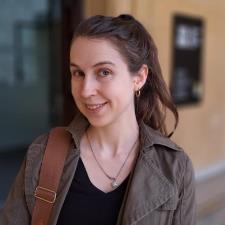
Casey B. answered • 04/03/19
Math, Science, and Writing Tutor with ESOL Endorsement
With mixed numbers you can add the whole numbers separately and the fractions separately. So,
5 + 2 = 7
Then, since the fractions do not have the same denominator, you will first need to find the LCM (least common multiple). You can do this by listing the multiples of each number and finding the smallest number that they have in common.
3, 6, 9, 12
6, 12, 18
Notice that there are two numbers that they have in common, but 6 would be the LCM because it is the lowest.
Since one of the fractions already has a denominator of 6, you will only need to change the second fraction. You will do this by multiplying both the numerator and denominator by 2, which will give you an equivalent fraction to 2/3 with a denominator of 6.
Now you can add your 5/6 + 4/6 = 9/6
Since 9/6 is a fraction greater than 1, you will need to make it into a mixed number by dividing your numerator by the denominator: 9÷6= 1 3/6
Then add your mixed number to the total whole numbers you found: 1 3/6 + 7




